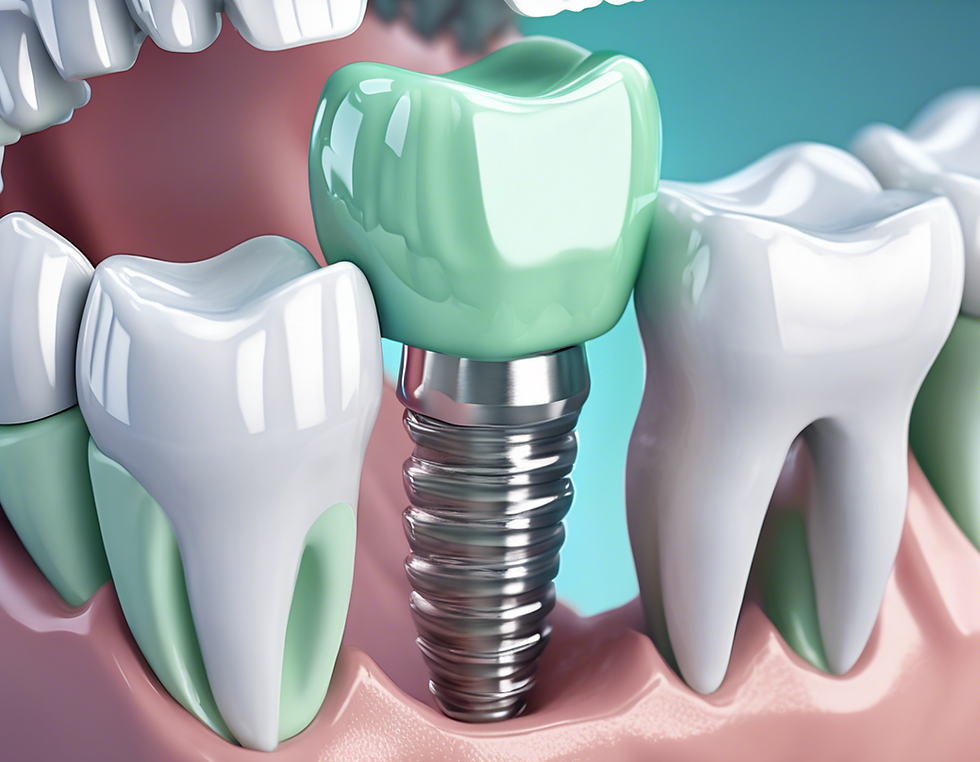How to Floss Like a Pro: Top Tips for Proper Oral Hygiene
- bkalos905
- Mar 8
- 4 min read
Maintaining good oral hygiene is vital, not just for a bright smile but for your overall health. Flossing plays a crucial role in this routine, yet many people either overlook its significance or are unsure how to do it properly. This guide will provide essential techniques and best practices for flossing, helping you achieve excellent oral health and a brighter smile.
Why Flossing is Important
Flossing is not simply a suggestion from your dentist; it's essential. Plaque and food particles can get stuck between your teeth, where toothbrushes can’t reach. If left unchecked, this buildup can lead to gum disease and cavities. According to the American Dental Association, around 47.2% of adults aged 30 and older have some form of gum disease.
Brushing twice a day can clean the surfaces of your teeth, but flossing is crucial for cleaning between them. Neglecting this step could jeopardize your dental health and result in costly treatments down the line.
Choosing the Right Floss
Choosing the right dental floss is important for effective cleaning. Here are some options to consider:
1. Waxed vs. Unwaxed Floss
Waxed Floss: This type smoothly slides between teeth, making it ideal for those with tighter spaces.
Unwaxed Floss: This option can be preferred by some since it offers more friction, which is great for removing plaque.
2. Dental Tape
For individuals with wider gaps between teeth, dental tape can provide better coverage. It's broader and flatter than regular floss, ensuring more effective cleaning in those spaces.
3. Floss Picks
Floss picks are handy for travel or quick cleanings, but they can be less effective than traditional floss. Use them when necessary but aim to make traditional floss your go-to choice.
The Proper Flossing Technique
Using the right technique makes all the difference. Follow these steps for effective flossing:
Step 1: Prepare Your Floss
Cut about 18-24 inches of floss and wrap most of it around one middle finger. Wind the remainder around the opposite middle finger. This method ensures you use a clean segment for each tooth, which is more hygienic.
Step 2: Insert the Floss
Carefully insert the floss between your teeth using a zig-zag motion. Avoid snapping the floss, as it could harm your gums.
Step 3: Curve Around Each Tooth
Once the floss is in place, curve it around the base of each tooth, forming a "C" shape. Make sure to go slightly below the gum line to dislodge hidden food particles and plaque.
Step 4: Move Up and Down
Gently slide the floss up and down against the side of the tooth. This action effectively scrapes away plaque. Repeat this process for both teeth on either side of the gap.
Step 5: Discard the Used Floss
Once done with one tooth, move to a clean section of floss for the next one. After flossing all your teeth, discard the used floss.
How Often Should You Floss?
For optimal results, aim to floss at least once a day. Establishing a consistent routine is crucial, whether you choose to do it in the morning or before bed. The more often you floss, the more manageable it becomes.
Tips for Flossing Effectively
While mastering the basic technique is key, a few additional tips can enhance your flossing routine:
Be Gentle: Always floss carefully to avoid damaging your gums. Forcing the floss can lead to injury.
Use the Right Amount: Aim for 30-45cm (arm's length) of floss. This length provides ample material to work with and ensures effective cleaning.
Follow a Routine: Pair flossing with brushing and using mouthwash. Integrating these activities can help you remember to floss consistently.
Choose the Right Time: Determine the time that fits best in your schedule, be it morning or evening. Making it a habit helps with commitment.
When to Consult a Dentist
If flossing causes pain or if your gums bleed regularly, make an appointment with your dentist. These signs may indicate underlying conditions like gum disease, which require professional evaluation and treatment. One study revealed that patients with gum disease are 2-3 times more likely to develop other health issues, making it critical to address any concerns promptly.
Make Flossing a Habit
Incorporating daily flossing into your routine is vital for sustaining good oral health. By applying the techniques and tips outlined here, you can effectively remove plaque and reduce the risk of dental issues.

Remember, practice leads to proficiency, so don’t get discouraged if you struggle initially. Over time, you'll become skilled at flossing and reap the rewards of a cleaner, healthier mouth.
Flossing is not merely an optional addition to your dental care regime; it's a fundamental routine that can greatly enhance your oral health. With the right tools and techniques, you can floss like a pro and enjoy lasting benefits for your smile. Embrace this knowledge and make flossing a regular part of your oral hygiene. Your teeth and gums will be grateful!



